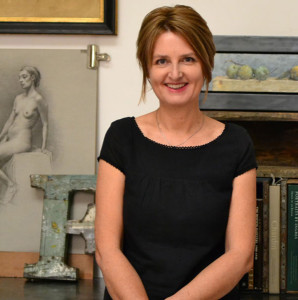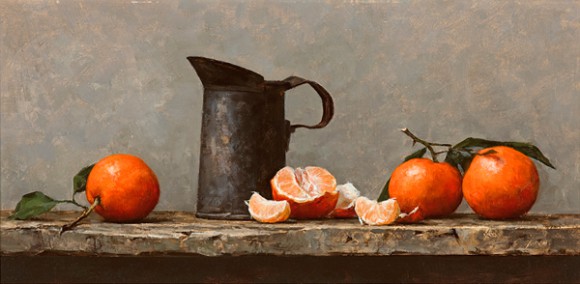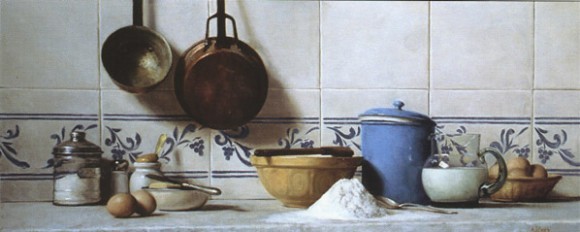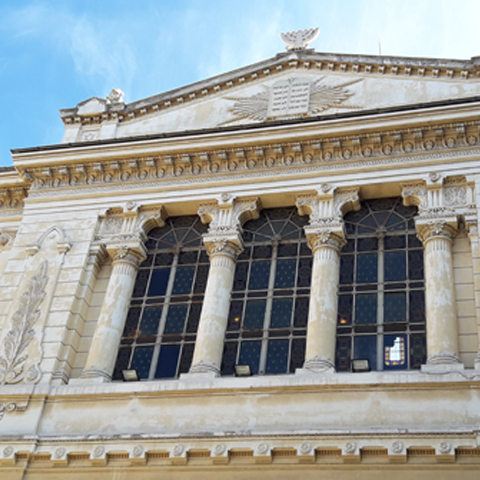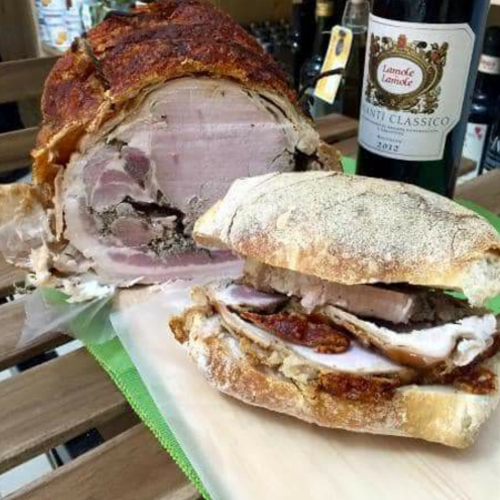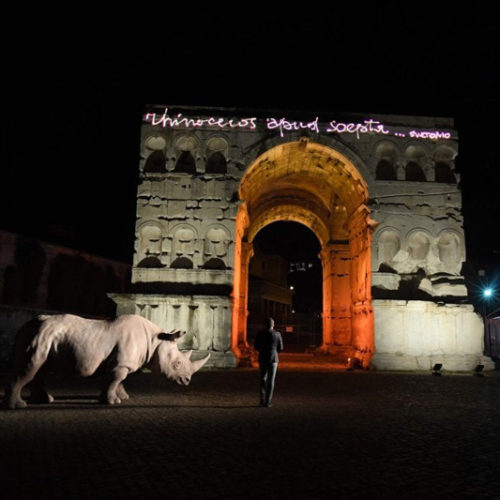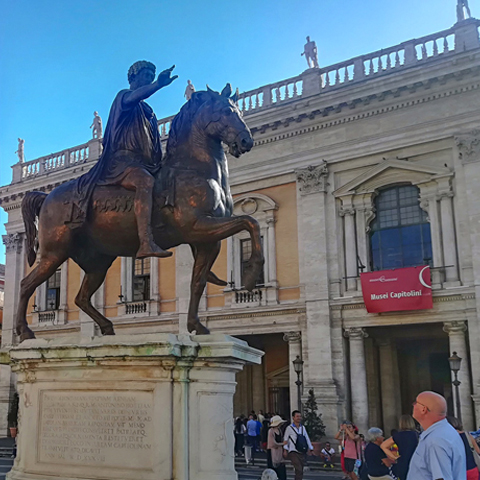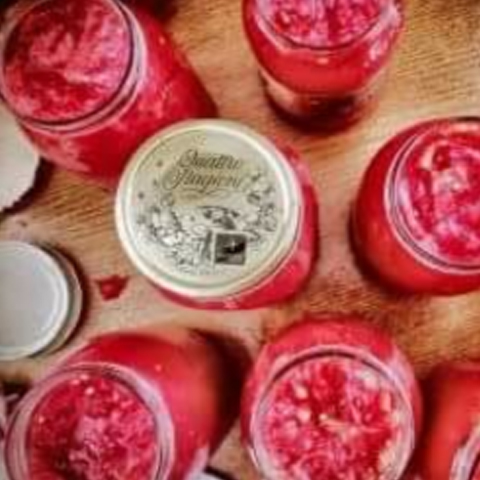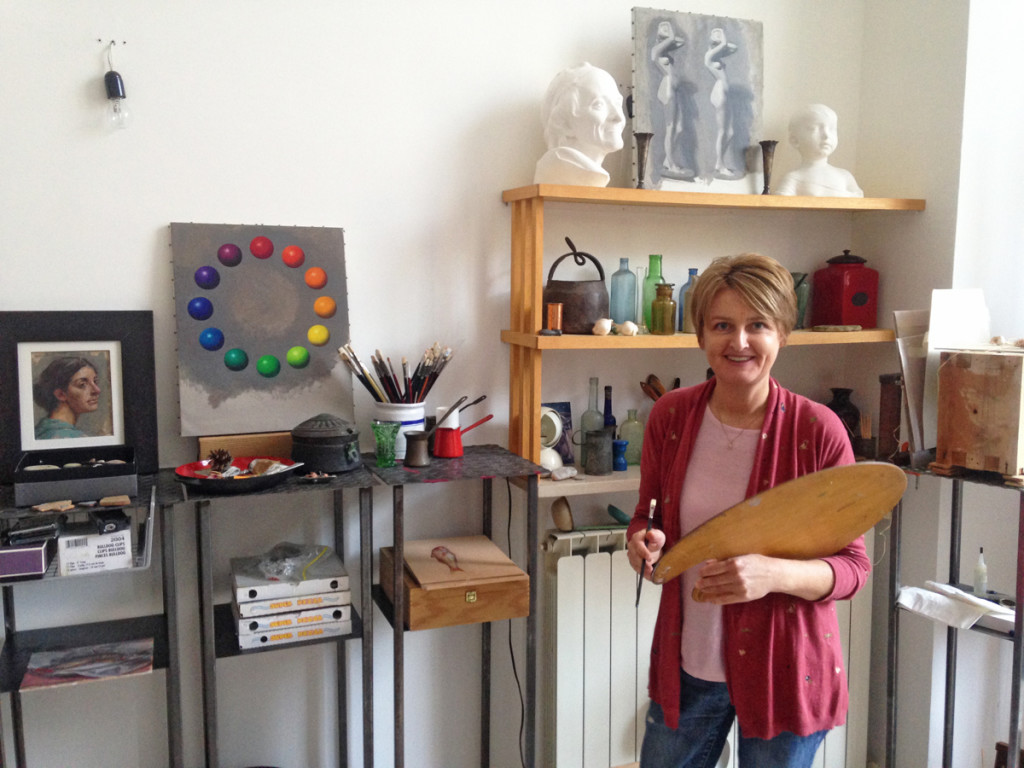
A couple enjoys a casual Saturday stroll. A child wearing cumbrous rollberblades clatters over the sanpietrini as his mother calls out to him. I catch sight of Andrea and stand up from my seat on an ancient stone where I’d been watching the slow current of people moving through Piazza di S. Lorenzo in Lucina.
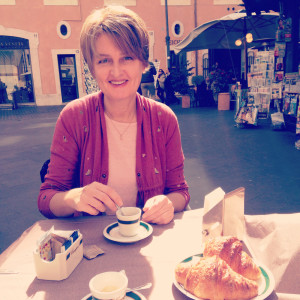 We exchange warm greetings and head over to Ciampini’s Cafe nearby. With days of rain behind us, the return of Rome’s vibrant light is quite welcome. We decide the few extra euros for coffee at an outdoor table in the warm sun is worth it. We talk over expresso and croissants.
We exchange warm greetings and head over to Ciampini’s Cafe nearby. With days of rain behind us, the return of Rome’s vibrant light is quite welcome. We decide the few extra euros for coffee at an outdoor table in the warm sun is worth it. We talk over expresso and croissants.
Finally, Andrea tells me she’d like to get to the market before it is too picked over. We pack up and head out.
Soon we are in a very small market at Piazza Di Monte D’Oro, with only a handful of booths. I’d expected Andrea to browse but she heads directly for one stall in particular where Domenico, his mother, and their helpers at the booth greet her warmly. After the customary long-form Italian greeting, Domenico hands Andrea a basket an d she begins to peruse the large selection of healthy, colorful produce. This is a ritual Andrea is known for at the market. Domenico will ask if an item she’s selecting is to eat or to paint. Andrea will often bring completed paintings to show what she has done with her selected subjects. When Andrea is satisfied with her choices, and after some more friendly banter, we take a walk back to Andrea’s school, Atelier Canova. Andrea named her school after Italian painter and sculptor Antonio Canova because her school’s first location was part of the building that was originally one of Canova’s studios here in Rome. Recently, Andrea found better accommodations on picturesque Via Margutta, and she moved the studio but kept the name.
d she begins to peruse the large selection of healthy, colorful produce. This is a ritual Andrea is known for at the market. Domenico will ask if an item she’s selecting is to eat or to paint. Andrea will often bring completed paintings to show what she has done with her selected subjects. When Andrea is satisfied with her choices, and after some more friendly banter, we take a walk back to Andrea’s school, Atelier Canova. Andrea named her school after Italian painter and sculptor Antonio Canova because her school’s first location was part of the building that was originally one of Canova’s studios here in Rome. Recently, Andrea found better accommodations on picturesque Via Margutta, and she moved the studio but kept the name.
Back in the late 1980s, Andrea had the idea that she would teach art at the high-school level in Australia but fate had a very different plan. In 1989 she graduated from The Victorian College of Advanced Education in Melbourne with a degree in art education. “I did what everyone in Australia does after college. You go to Europe and just backpack around.” She bought a 50cc motorbike in London, strapped her bag to the back of it and drove all over Europe, stopping to sketch and write in her travel journal. When she crossed the Alps into Italy, she christened her motorbike Hannibal, after Hannibal of Carthage whose army was said to have successfully invaded Rome by crossing the Alps on the backs of elephants. “I was probably going about the same speed,” Andrea laughs.
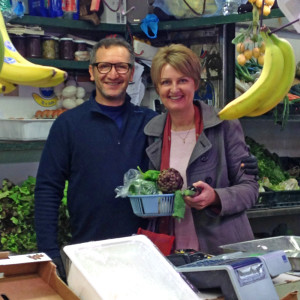 She took a break in Germany where she worked in a vegetable factory for a year. I joke with Andrea that this was the beginning of a long relationship with vegetables, pointing to the large bag of produce she’d brought from the market. Indicating a beautiful sprig of Rosemary, I tell her I’m looking forward to seeing it in a painting. She interrupts, “Yeah, that’s for my soup.” We both laugh.
She took a break in Germany where she worked in a vegetable factory for a year. I joke with Andrea that this was the beginning of a long relationship with vegetables, pointing to the large bag of produce she’d brought from the market. Indicating a beautiful sprig of Rosemary, I tell her I’m looking forward to seeing it in a painting. She interrupts, “Yeah, that’s for my soup.” We both laugh.
After Germany, Andrea continued to travel all over Europe. Hannibal died. Tears were shed. She bought another bike and continued on until she ended up in Florence. “At the time you could ride right up to the Duomo. I put the bike up on its stand and sat there, resting on my backpack. In ten minutes I had decided I wanted to live in Florence.” One year later Andrea was a student at the Florence Academy of Art, an Atelier-style studio with only 14 students studying under painting master, Daniel Graves. Andrea excelled quickly and was a student-teacher a year later. She spent another 6 years at the school before picking up and moving to New York City where she started her own school, The Harlem Studio, which she ran for seven years. Then it was back to Italy, this time settling here in Rome, where she is in her 8th year. Undoubtedly Andrea’s years spent at the Florence Academy had a strong effect on her classical realist painting ability. But since then her style has evolved into what is now a very personal, fully realized, and masterful method of working, which she happily passes on to students of her own.
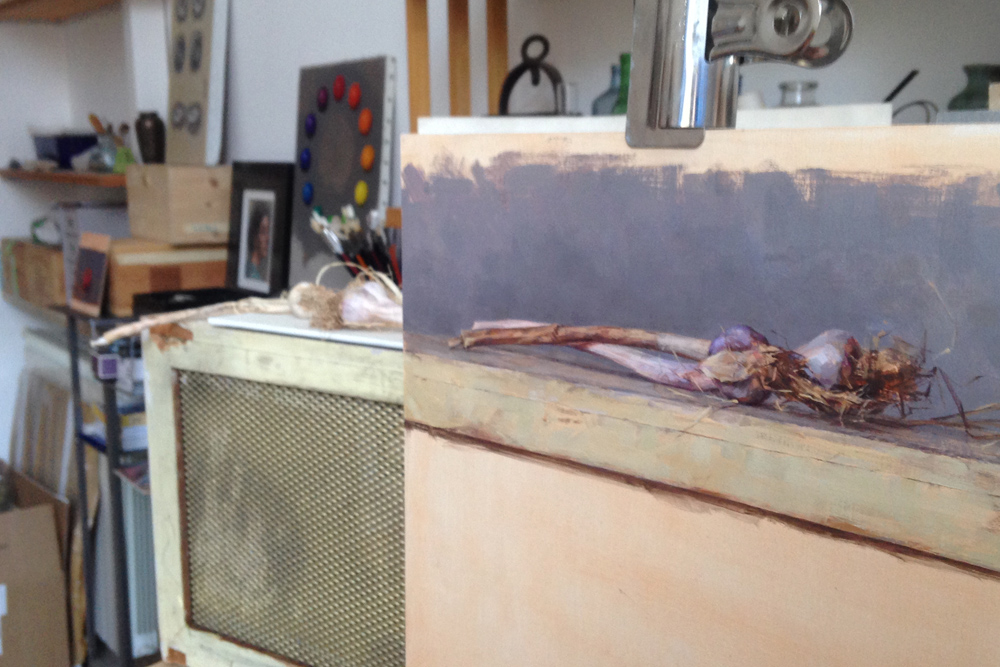
Andrea’s school focuses primarily on still life and portraiture with a secondary focus on landscape and cityscape painting. Referring to the highly advanced style she teaches, I ask if Andrea is willing to work with a student of little or no experience. “Love them,” she says without hesitation. She explains to me that the method she has developed can be effectively taught to all students, regardless of skill level. Classes are intimate. With a maximum of 6 students per class, participants never lack for attention from the master. Generally Andrea does five of these three-week intensive classes per year. For those interested in more of a luxurious retreat setting, complete with fabulous food prepared by a private chef, Andrea takes a landscape painting group once a year to a villa outside of Pienza, in idyllic southern Tuscany.
While Andrea enjoys teaching and is very good at it, she also deeply loves living the life of a career artist, pursuing ever-higher aspirations in that area as well. Over the years, her paintings have garnered impressive awards and gained her entrance into prestigious galleries. She has exhibited in London, Germany, Italy, Los Angeles, San Francisco, and Australia. When I ask Andrea for a definition of her painting style she answers in her innately dry humor, “Stick a H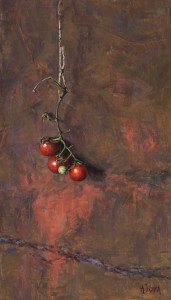 olbein over top of a Rothko … and you get two paintings for the price of one!” Her answer is flippant, but the description is perfect. The backgrounds and areas of less focus in Andrea’s paintings do have a Rothko-esque looseness to them, as if they’re disintegrating in an acid bath. In a compelling contrast, as Holbein is to Rothko, Andrea applies a controlled tightness to the areas of the painting where she wants to direct the viewer’s attention. The end result is that the subject seems to come right off the canvas. I would argue that Andrea’s classical realist style is more realistic than photorealism. While photorealism focuses on a subject in the way a camera would view the scene, Andrea’s style sees the world the way the human eye engages reality.
olbein over top of a Rothko … and you get two paintings for the price of one!” Her answer is flippant, but the description is perfect. The backgrounds and areas of less focus in Andrea’s paintings do have a Rothko-esque looseness to them, as if they’re disintegrating in an acid bath. In a compelling contrast, as Holbein is to Rothko, Andrea applies a controlled tightness to the areas of the painting where she wants to direct the viewer’s attention. The end result is that the subject seems to come right off the canvas. I would argue that Andrea’s classical realist style is more realistic than photorealism. While photorealism focuses on a subject in the way a camera would view the scene, Andrea’s style sees the world the way the human eye engages reality.
“Writing about music is like dancing about architecture.”
Steve Martin
I’m reminded of a quote often attributed to Steve Martin: “Writing about music is like dancing about architecture.” There is no arrangement of words that can do justice to the visual impact of Andrea’s work. You have to see it for yourself. And while the photos on her website are exquisite, I encourage you to see the pieces in person, in her studio or at her next show. They are well worth it.
